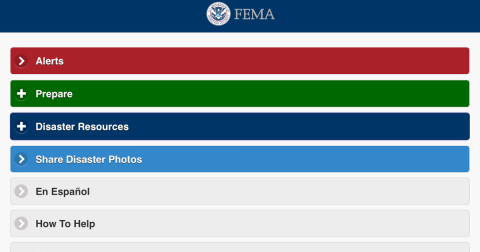Trust
Understand how digital services impact trust in government.
Trust has to be earned every time. Federal websites and digital services can’t assume it. The guidance, resources, and community you find here will help to create government websites that inspire trust in federal digital resources.
Executive Order 14058: Transforming Federal Customer Experience and Service Delivery To Rebuild Trust in Government and OMB Circular A-11, Section 280

Trust: Essential knowledge
-
Federal website standards
The federal website standards help agencies provide high-quality, consistent digital experiences for everyone. They cover common visual technical elements and reflect user experience best practices.
-
An introduction to trust
Trusted digital services meet customer expectations, and they are easy to find, understand, and use. Understand how digital services impact trust in government.
-
21st Century Integrated Digital Experience Act
Delivering a digital-first public experience is a significant opportunity to improve the lives of millions by making it easier to access the information and services they use and count on each and every day.
-
U.S. Web Design System Design principles: Earn trust
A list of key considerations and practical actions you can take to earn trust with users.
-
Get .gov
Host your site on a .gov or .mil domain to assure users it’s an official government site.
-
To build trust, aim for easy
Trust is built up with good experiences, and broken with bad ones. Build sites that build trust by considering user needs, respecting people’s time, and avoiding customer experience pitfalls.
Trust events
Artificial Intelligence for Homeland Security: Developing the Strategy
Overview of NIST Initiatives on Artificial Intelligence Standards, Principles, and Critical AI Issues
Trust news
Are social media influencers right for your digital media campaign?
Learn how to work with social media influencers to achieve your goals, while accounting for different budgets.
Digital front door: Expanding access to VA
More Veterans are turning to the U.S. Department of Veterans Affairs (VA) for healthcare and benefits, accessing these services online through tools like the VA Health and Benefits mobile app and VA.gov. With over 2.28 million app downloads and 17.8 million monthly visitors on VA.gov, these digital tools provide faster, easier, and more inclusive access to VA services. Learn more about how these technologies are often Veterans’ first interaction with VA by watching their latest video, Digital Front Door: Expanding Access to VA. — via U.S. Department of Veterans Affairs

Case study: Removing barriers to applying for a presidential pardon
At the Department of Justice, Access DOJ and the Office of the Pardon Attorney (PARDON) partnered to simplify and streamline the presidential pardon application process. By conducting usability testing and gathering feedback, they identified key issues with the existing application, such as its complexity and length. See how redesigning the forms to be more accessible and understandable led to a more efficient process for both applicants and staff. — via Department of Justice

Creating a blueprint for quality: How the PX Contact Center helps agents grow their skills
Every day, live agents at USA.gov’s Public Experience (PX) Contact Center answer questions from the public about government benefits and services. Learn how the PX Contact Center develops a workforce of excellent agents, using immersive onboarding, tailored and continuous training, feedback loops, and calibration meetings to empower their agents to deliver accurate information. USA.gov’s system for employee and contact center management ensures that every customer interaction leaves a lasting impact. — via USA.gov

Celebrating the work of public servants
Performance.gov invites you to participate in their #GovPossible campaign to celebrate Public Service Recognition Week (PSRW)! Recognize the invaluable efforts of government employees who ensure that the everyday needs of Americans are met. Access a range of tools and resources to help you join the #GovPossible campaign and show your support. The #GovPossible toolkit makes it easy for you to participate in this important (and fun!) campaign. — via Performance.gov

Resources on Trust
-
Requirements for delivering a digital-first public experience
Learn how to implement 21st Century IDEA to design and deliver better websites and digital services.
-
An introduction to domain management
A .gov domain instantly conveys credibility and trustworthiness, and proper domain management practices ensure that your website is secure and accessible.
-
Requirements for transforming federal customer experience and service delivery
Learn how to strengthen customer experience and service delivery within your federal agency.
-
An introduction to privacy
Introductory guidance on implementing privacy protections for users of federal websites.
-
An introduction to trust
Guidance on how to build government websites that people can trust.
-
Executive Order 14058: Transforming Federal Customer Experience and Service Delivery to Rebuild Trust in Government
A more simple, seamless, and secure customer experience for the American public.
More News and Events on Trust
16 posts
Are social media influencers right for your digital media campaign?
Learn how to work with social media influencers to achieve your goals, while accounting for different budgets.
Digital front door: Expanding access to VA
More Veterans are turning to the U.S. Department of Veterans Affairs (VA) for healthcare and benefits, accessing these services online through tools like the VA Health and Benefits mobile app and VA.gov. With over 2.28 million app downloads and 17.8 million monthly visitors on VA.gov, these digital tools provide faster, easier, and more inclusive access to VA services. Learn more about how these technologies are often Veterans’ first interaction with VA by watching their latest video, Digital Front Door: Expanding Access to VA. — via U.S. Department of Veterans Affairs

Case study: Removing barriers to applying for a presidential pardon
At the Department of Justice, Access DOJ and the Office of the Pardon Attorney (PARDON) partnered to simplify and streamline the presidential pardon application process. By conducting usability testing and gathering feedback, they identified key issues with the existing application, such as its complexity and length. See how redesigning the forms to be more accessible and understandable led to a more efficient process for both applicants and staff. — via Department of Justice

Creating a blueprint for quality: How the PX Contact Center helps agents grow their skills
Every day, live agents at USA.gov’s Public Experience (PX) Contact Center answer questions from the public about government benefits and services. Learn how the PX Contact Center develops a workforce of excellent agents, using immersive onboarding, tailored and continuous training, feedback loops, and calibration meetings to empower their agents to deliver accurate information. USA.gov’s system for employee and contact center management ensures that every customer interaction leaves a lasting impact. — via USA.gov

Celebrating the work of public servants
Performance.gov invites you to participate in their #GovPossible campaign to celebrate Public Service Recognition Week (PSRW)! Recognize the invaluable efforts of government employees who ensure that the everyday needs of Americans are met. Access a range of tools and resources to help you join the #GovPossible campaign and show your support. The #GovPossible toolkit makes it easy for you to participate in this important (and fun!) campaign. — via Performance.gov

18F at ten
We’re celebrating all the ways we continue to realize our founding vision: bringing technologists into government, launching shared digital services, and helping partner agencies build user-centered technology. — via 18F

Spring 2024 Community Summit
Why the American People Deserve a Digital Government
OMB released new policy guidance for government that includes a variety of actions and standards to help federal agencies design, develop, and deliver modern websites and digital services. Memo M-23-22, Delivering a Digital-First Public Experience, will make it seamless for the public to obtain government information and services online, and help agencies fully implement the 21st Century Integrated Digital Experience Act (21st Century IDEA). — via The White House

To Build Trust, Aim for Easy
Trust is earned through consistency and commitment. Build sites that build trust by considering user needs, respecting people’s time, and avoiding customer experience pitfalls.
Using Technology to Improve Customer Experience and Service Delivery for the American People
Executive Order 14058, released today, reinforces the second priority of the President’s Management Agenda—centered around improving customer services through technology—and demonstrates the Biden-Harris Administration’s commitment to reducing customer burden, addressing inequities, and streamlining processes. — via The White House

Artificial Intelligence for Homeland Security: Developing the Strategy
Overview of NIST Initiatives on Artificial Intelligence Standards, Principles, and Critical AI Issues
Building the Elements That Earn Trust
This week, we’d like to talk about trust, and the elements that go into building trust with people who are using our services.
Building Trust with Users Through Open Communication and Feedback
A look at how FEMA responds to user needs and bugs in their app development.
















